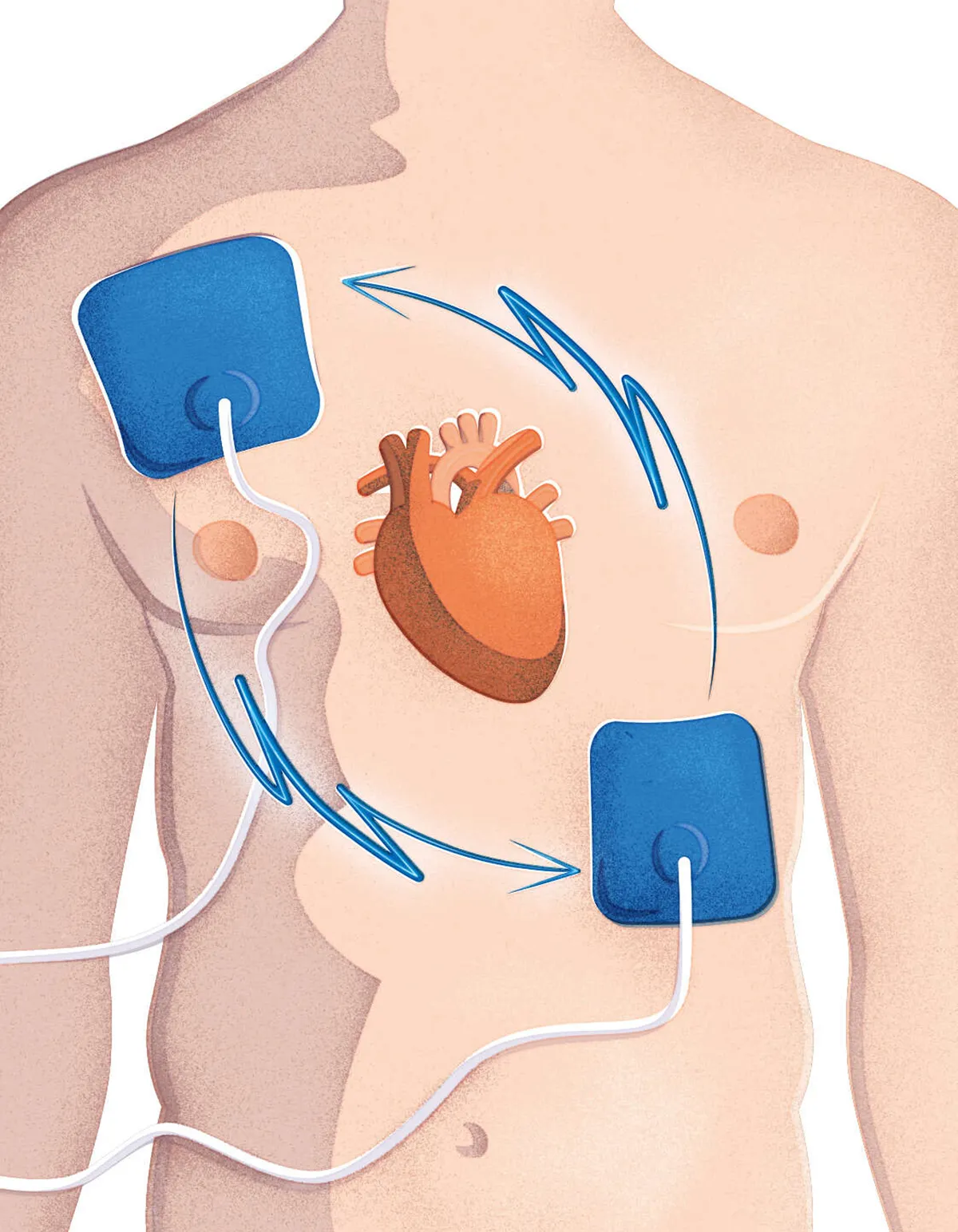The sinus node of the heart is its natural pacemaker. It sends an electrical impulse to make the heart muscles beat in rhythm.Cardiac arrest is usually caused by a life-threatening change in the rhythm of the heart (known as dysrhythmia).
When the rhythmof the heartgoes awry in cardiac arrest, the defibrillator delivers a dose of electric current to the heart. The process is not fully understood, but this current depolarises a large amount of the heart muscle, which ends the dysrhythmia. Once this happens, the pacemaker of the heart can re-establishanormal rhythm.

If the shock delivered by the defibrillator isn’t strong enough, the heart might not completely repolarise, and the abnormal rhythm continues. Defibrillators monitor the new heartbeat and might advise the user to deliver another shock.
A common misconception is that defibrillators will restart a heart thatis flatlining (known as asystole). But this isn’t true; once the heart is unable to create its own electrical pulse, a defibrillator will not work. Defibrillators do not jump-start the heart like jump-starting a car; they reset the natural pacemaker, like rebooting a computer.
They are straightforward foranyoneto use, and it’s worth remembering that they don’t typically allow the user to administer a shock if a ‘shockable’ rhythm is not detected–so you can’t go far wrong, and speed is of the essence.
Read more:
- How do the chambers of the heart work?
- How does an MRI scanner work?
- Does cryotherapy work?
- How does Viagra work?
Asked by: Felicity Brown, via email
To submit your questions email us at questions@sciencefocus.com (don't forget to include your name and location)